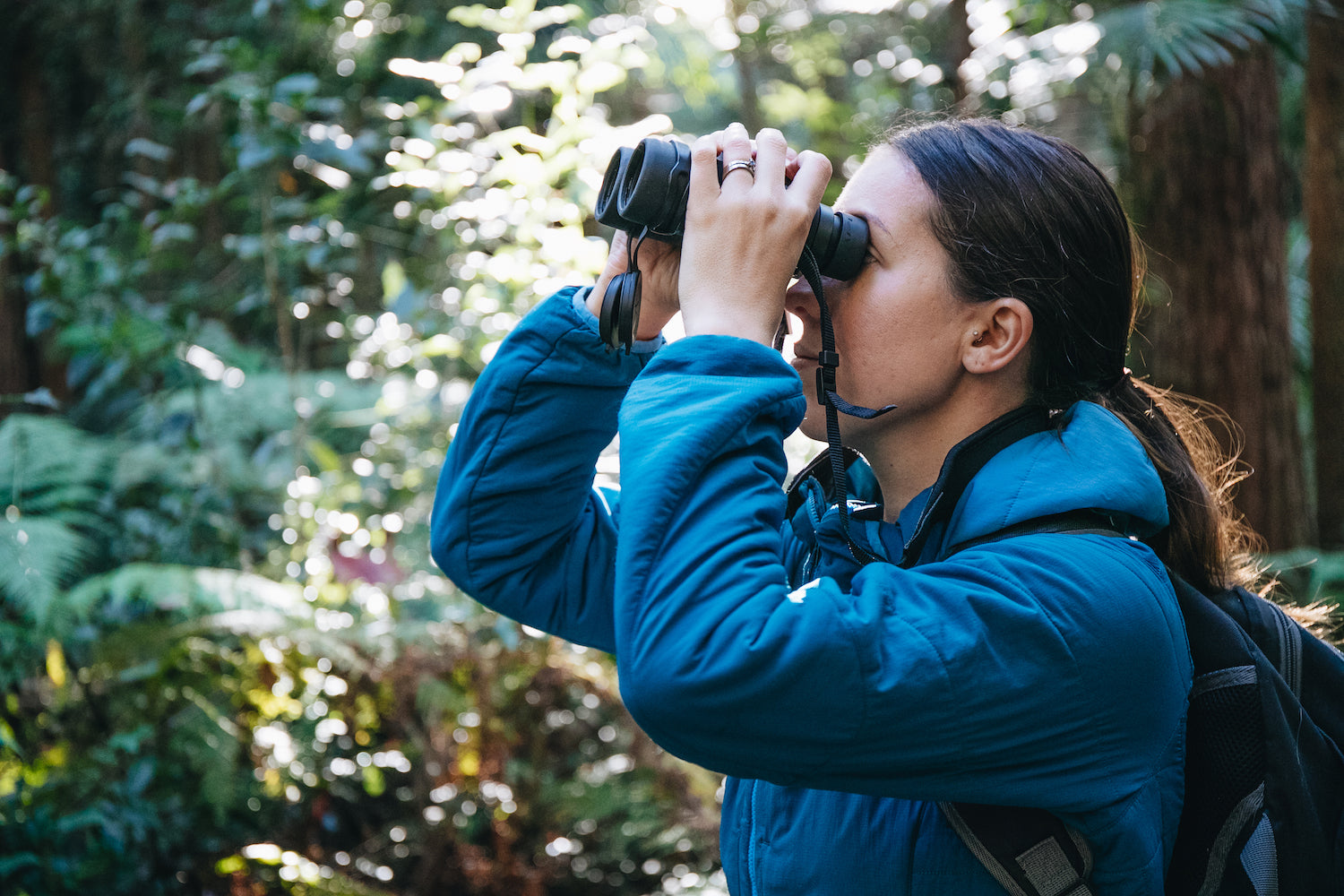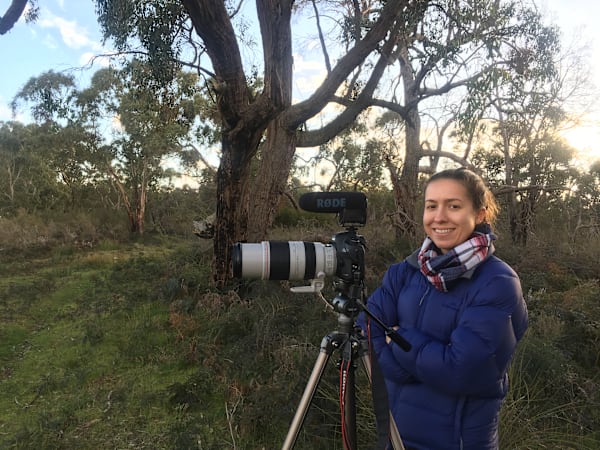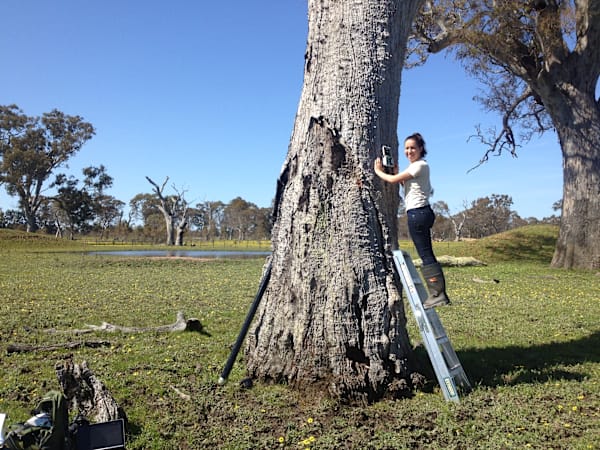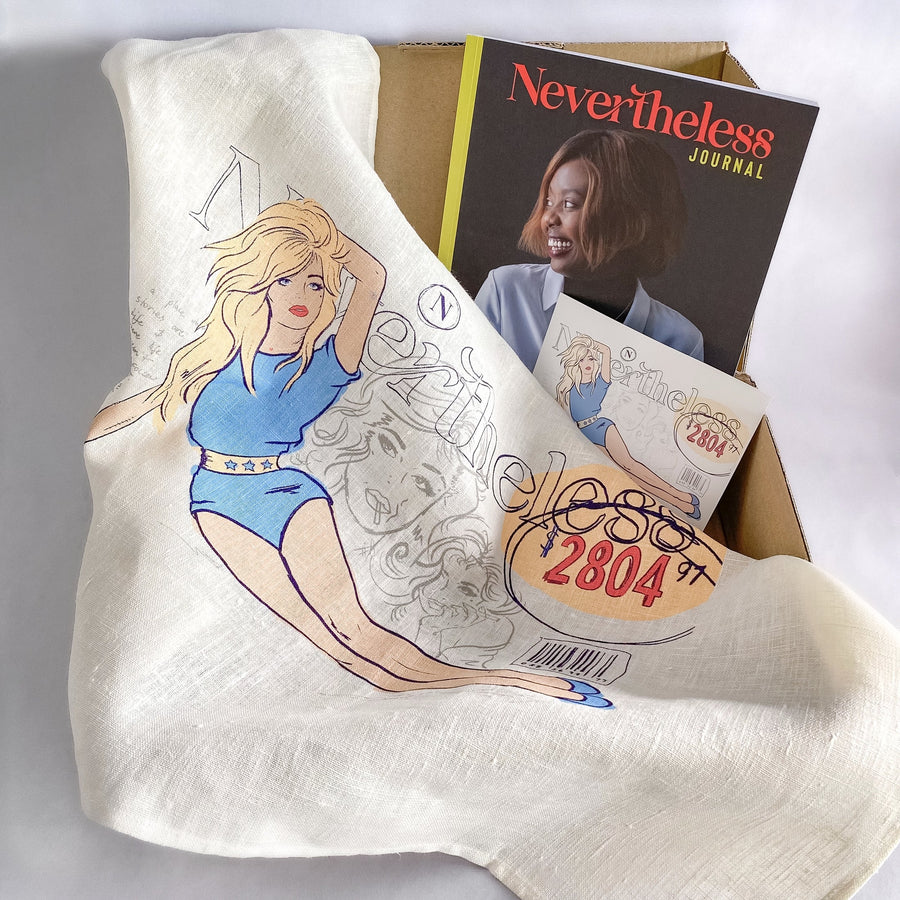The glossy side of conservation ecology with Dr Daniella Teixiera

Words by Samantha Morris
Photos by Nicholas Rakotopara
Dr Daniella Teixeira is an accidental pin-up girl for Glossy Black-Cockatoos in Australia.
The “Glossy” expert, who’d previously worked on Kangaroo Island was at home on the Gold Coast when bushfires raged in 2019-20. Fellow ecologists were on the island fighting fires and protecting their homes. She was safe watching fire maps and seeing nest site after another getting toasted.
“It was awful. I felt so helpless,” she said.
She had a modest presence on social media and decided to raise $5000 to help Glossies and those working with them.
“It exploded and we raised way more than that. $65,000 in fact,” Dani said.
“That caught the attention of media and I ended up doing loads of interviews – multiple a day, all while I was trying to finish my PhD. But the people on Kangaroo Island were so grateful because they simply didn’t have the mental space to be doing interviews.”
It was that media attention that led to Dani being contacted by Silverback Productions, asking if they could film her when she returned to Kangaroo Island. She’d never heard of them but Googled and saw they were based in the UK and had worked on some big projects. It wasn’t until she was sitting in the Adelaide airport with a cameraman that she asked what the filming was for, but he couldn’t say other than to let her know it would be available via Netflix.
“But honestly I was so caught up in the distress of what was happening I didn’t really care. They were minimalist. Just a cameraman and director, no huge film crew with lighting or anything.”
“Then six months later they wanted to film again, interview style but we couldn’t get back to Kangaroo Island because of COVID and there was a different crew again. They struggled to get any footage of Glossies. I put them onto someone I knew and they ended up purchasing video footage from him for the film.”
“It was him who asked whether I knew who was narrating the film.”
“And then I had to keep it a secret. I couldn’t believe it when they gave us early access to the film. I was like, ‘holy fuck, I’m actually in an Attenborough film. Honestly, I had no idea.”
While being in an Attenborough film was accidental, Dani’s expertise around Glossy Black-Cockatoos was not. She studied an undergraduate marine science degree at UQ and in 2016 commenced her PhD in conservation biology researching Glossy Black-Cockatoos and Red-tailed Black-Cockatoos.

“I was 28 when I went back to do my PhD,” Dani said, “and had talked to lots of people who’d done PhDs and their main advice was choose your supervisor wisely. You have to work with that person for three to four years and if you don’t get on, life is a misery.”
“So I picked my supervisors first and they recommended bioacoustics and black cockatoos and we went for it.”
“Bioacoustics was just becoming a thing but on a very small scale. Technology had advanced to the point that ecologists could consider doing the work but it still wasn’t very well established.”
Brisbane has the strongest representation of bioacoustics researchers in Australia with two main labs at QUT and Dani says these teams had advanced the field a lot.
“The Threatened Species Strategy had just been released identifying 20 species for conservation by 2020 and Red-tailed Black-Cockatoos were one of the species. There was some money there.”
“All conservation concern was on Red-tailed Black-Cockatoos and Glossies were an add-on.”
“Then the fires happened and concern for Glossies overtook the Red-tails.”
>>> Shop all things Nevertheless
So, what is bioacoustics monitoring?
Dani says people disagree around definitions. In her mind, acoustic monitoring is any monitoring using sound. Bioacoustic monitoring, on the other hand, is studying animal vocal behaviour using sound.
“So vocalisations that individual species make, what they mean and what data you can get from that. When we think of monitoring Glossies or Red-tails, that’s bioacoustics,” Dani explained. “We’re focussed on individual species and the finer details of their behaviour.”
“Ecoacoustics is more where we’re looking at the whole sound-scape. We don’t necessarily look for individual species but can extract data about everything that’s going on.”
“Back in the day, until technology caught up, when we spoke about bioacoustics, it would be people studying the sounds that animals make. They’d go out, record some whale song or go into the forest with these massive recorders and hold the mic to the sky. In the last ten years we’ve seen passive recorders developed which are small and cheap and that’s when bioacoustics became a thing ecologists could use for monitoring rather than just studying the sound an animal makes.”
I can picture all these recorders out in a field or forest recording all sorts of sounds and then researchers having a huge pile of SD cards they’ve got to manually listen to but Dr Daniella Teixeira calls this the “fun part.”
“When this first became a method, people would listen to the sounds and view the spectrograms and manually go through them to extract the bits and pieces they wanted. It was very laborious sifting through sound files and it doesn’t scale very well. It’s really limited to small studies.”
But now, people like Dani are trying to automate this using machine learning. She trains algorithms to detect the calls of Glossies and Red-tails.
“QUT in particular is certainly the leader in Australia and one of the leaders in the world in that space,” Dani said.
“Essentially, you have all your sound files but you don’t yet have your data. You then have to process your files until you get those numbers into a spreadsheet.”
Bioacoustic monitoring of Glossy Black-Cockatoos
One of the projects Dani is working on now (and trust me there are plenty) is a bioacoustics monitoring project for Glossy Black-Cockatoos in Southeast Queensland. Dani and her team are monitoring 100 sites as a pilot study. They leave the sound recorders out there for a week before returning to collect them and then move them onto the next site.
“We’re trying to establish whether each site is being used by Glossies in a given moment. Hopefully one week is enough time to capture them because they don’t call a lot, they’re not super-noisy and they move around a bit.”
“My job, and a big part of this project, is developing the AI for this and to do that I need to build up a training data set.”
Some people might have helped out in the past identifying animals caught on camera trapping images. They jump online and look at an image and identify a fox or a cat or whatever. Essentially that’s what Dani needs to do that with her sound files. She creates files with Glossies present and ones without and then plugs that into the algorithm so it can learn what Glossies sound like in their natural environment.
“Essentially I’m training that model and then will test the model on a data set we can verify so we know how well it performs. Once that is done – it’s a lengthy process – we’ll run it on the whole data set. And then, manually check all of it.”

This scientific method, of studying the bird’s ecology is called occupancy modelling. Dani explains that it correlates sightings – both presence and absence of the birds – with the environmental data they collect. For example, scientists will be able to know that Glossies are likely to be present at sites that have or do not have certain things like food availability, and how that relates to fire history. From that, they can determine the probability of someone detecting them when they are there.
“Ultimately we’ll produce a model of the environment as it stands today: here are all the sites that have a high probability of containing Glossies and here are the sites that have a low probability – and then we can extrapolate or interpolate between that. For example, we could overlay vegetation mapping and predict for all the sites we didn’t visit, the likelihood that Glossies are there,” Dani explained.
“The beauty of this method is that once you do it each year or twice a year if working with the seasons you can see over time how occupancy changes.”
“Traditionally, the method relies on you going back multiple times. For Glossies, you’d look for orts [the chewed up cones of she-oak trees that is their favoured food]. Then you’d look for them the next day and look for them again on day three.”
“With acoustics, you can hear much further than you can see orts on ground. So there’s a much higher chance of detecting Glossies if they’re really there. And of course you use less resources, and it’s a more cost effective way to get better data.”
“But that’s all really to be determined,” she laughs.
At just 34, Dani is already one of Australia’s leading experts on the species and is sought after for speaking engagements and public comment on the bird and its plight. She hates being on camera, but unfortunately for Dr Teixeira, she’s really, really good at it.
Along with research projects such as this one, sitting on the national South-eastern Glossy Black-Cockatoo working group, appearing in documentaries alongside David Attenborough and being the spokeswoman for the Glossy Black Conservancy, Dani also has a “real” job which is a shared position between non-profit Bush Heritage Australia and the Queensland University of Technology: a unique collaboration between academia and protected area management.
“Glossies are just my side-gig,” she laughs, again.
We wrap up with me asking Dani what the highlights have been in her career so far.
“On a conservation level, it’s just contributing to conservation plans. I’m a co-author on a new action plan for Australian birds which means the global status of Glossy Black-Cockatoos (IUCN red list) is being re-assessed.”
“Personally, the stuff that’s given me the greatest sense of satisfaction though is deciphering the language of this bird. I spent a whole year observing their behaviours and looking at their language. It blows my mind, I’m just in awe of these animals. They’re so cool.”


